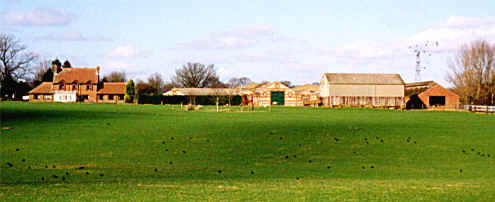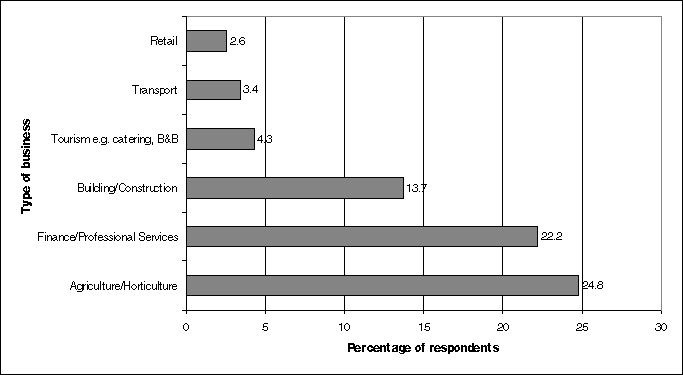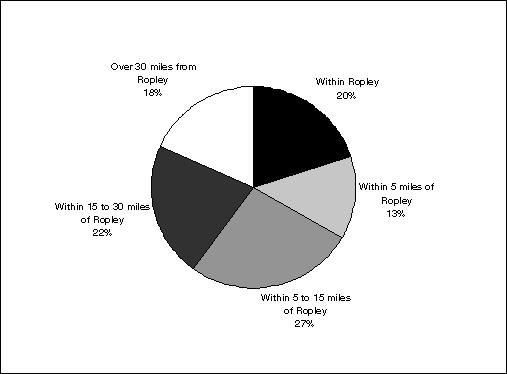
In an interesting contrast with today the 1851 census, when the population of Ropley was half what it is now and the village would have been much more self contained, shows only 5 "private residents" and some 20 tradesmen. Other workers would have been farm labourers and were not listed separately. Trades listed were farmers (7), wheelwright, butcher, corn dealer, publican, carpenter, cobbler, plumber, glazier, followed in 1867 by churn maker, basket maker, draper, and in 1878 land measurer, timber dealer, mallster, bricklayer, threshing machine owner. By 1911 the list was 30 private residents and 60 commercial, now including doctor, coal merchant, cycle repairer, motor engineer, and poultry farmers.
The proportion of "owner-occupiers" is now much higher. As with all rural communities, perhaps more so than most, the change has come with the diminishing proportion of people dependent on the land for their living who travel outside to work. Within Ropley itself there is not much employment, and the need for many to commute, along with the higher standard of living, has led to the transport problems.
117 businesses were identified in the questionnaire, but the majority of them do not employ other people. The largest employer is the school with 21 employees, followed by the Toyota garage and the Dean surgery with 18. Many of these jobs though are filled by people from outside the village.

Farming is still a significant feature of Ropley life, although due to modern mechanisation it is no longer a major employer. Most of the acreage is now farmed in large units of nearer 1,000 acres rather than the 200 acres common a generation or so ago. No commercial dairy herds remain in Ropley, but livestock — particularly sheep — are an integral part of our countryside and heritage.
There are a number of specialist nursery growers, particularly Lyewood and Oakleigh nurseries on the Petersfield Road, and Ropley has its own winery, with Court Lane Vineyard being established in 1978. Stephen Flook now runs this as a small family concern, and since 1993 the wine has been made and bottled on the premises. Traditional pruning methods are used to train the vines (see photo on page 3), which grow well on the drained light clay loam overlaying flinty chalk.
A more modern industry is the manufacture of "polytunnels" by McGregors in Monkwood, and there are a number of poultry units and sheep farms on a smaller scale.
59% of the respondents are economically active (employed or seeking employment). This is a decrease on the 1991 Census when the percentage was 62%. However, the number unemployed has declined during the same period, down to 2%. The number self-employed is 19.3%, with 7% employing other people.
Only 20% of the people questioned work within Ropley, and two thirds travel more than 5 miles. Of the 59% actively employed the proportions are shown on the pie chart.

The most popular method of transport to work is the car or motorcycle which is used by 84% of people. It is not surprising that only 4.2% use public transport and this includes those undertaking training or study.
